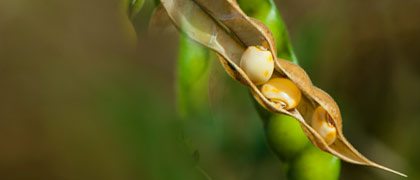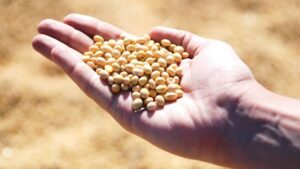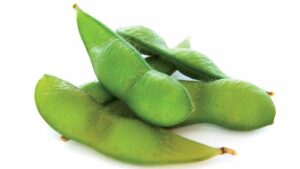Abundant Resources Are Not an Entitlement
Will sub-Saharan Africa be the next Brazil when it comes to soybean production? Governments and non-governmental organizations at the forefront of capacity-building efforts believe the potential exists but the road to get there will be long, hard and full of potholes. I’m not saying it can’t happen; it’s just not going to happen overnight.
Plant breeders who strive to develop varieties for diverse and emerging agricultural systems must work under extremely limited-resource conditions. Veteran soybean breeders Brian Diers and Randy Nelson at the University of Illinois helped me better understand the realities breeders face in working to develop a soybean industry in Africa.
They acknowledge that there’s strong demand for locally-adapted varieties of non-GMO seed, which can be saved and replanted by farmers. However, the lack of intellectual property protection dampens interest in commercial development. Nonetheless, a cadre of talented Africans have expressed interest in developing soybean breeding programs, but they lack the resources to get the job done.
Resources a Limiting Factor
The absence of breeding programs, coupled with the lack of local practical experience, immediately puts breeders at a disadvantage. It begins with their first considerations as they select a suitable germplasm platform to build a program.
Because of all the unknowns, the time required to achieve results is expected to be longer. This is costly — both in real terms and in the realization of benefit by farmers. From a commercial perspective, one must also consider time to market and market share capture. Keep in mind, these considerations are all important and the breeding program has not yet begun.
Once initiated, labor quickly becomes a limiting factor. In many countries, there is virtually a complete void of mechanization in breeding programs, few capital resources to become mechanized, and limited available fuel supplies or lack of reliable electric grids needed to power them on an ongoing basis.
One might get by OK while the program remains at the nursery level, but once materials begin to bulk for wide-scale testing, it becomes a different game. Even a small increment of mechanization can make a huge difference. For example, the availability of a small bundle thresher allows researchers to obtain more and better results than what is obtained from the traditional practice of laborers beating harvested soybean plants with sticks to collect the seed.
Additionally, data needed to make decisions might be skewed. Nelson explains an instance when only two to three participants in a 20- to 30-member cooperative testing program submitted test results. Materials were developed and distributed widely for testing, but little data resulted from the effort.
One must wonder if critical decisions or assumptions might have been made based on the limited data generated by only 10 percent of the participants. If so, was the data interpreted correctly? If not, might the breeding program be set back even further?
From an agronomic standpoint, soybeans require rhizobia to promote nodulation. In the United States, once inoculum is introduced into the soil, it stays for a long time. This is not the case in tropical soils, which don’t maintain rhizobia for long periods of time. This means potential soybean growers would periodically need to replenish rhizobia, but with what resources?
Little is known about which rhizobia is needed. Diers explains that there is interest in developing promiscuous varieties that respond favorably to the indigenous inoculum found in regional soils, but this is yet another unique challenge to breeders.
Collaborating soybean breeders from more developed regions might be limited in their contributions because they are not familiar with local agricultural and cultural practices. Nelson refers to an example where corn was hand-planted in rows on top of constructed ridges. While he might suggest the use of a push-planter to introduce a small degree of mechanization, he doesn’t know if researchers would consider adopting the practice. More importantly, would the farmer? Agronomic research is underway to evaluate the ridge-planting system, but the results have yet to be determined. Following tradition is the norm.
Contrary to conventional thought, Diers warns against the overuse of high-yielding varieties from similar latitudes to those in various regions across Africa. This being a direct result of the generally low fertility levels found in many African soils, particularly related to low phosphorous efficiency, and the typical farmer’s inability to access phosphorous-containing fertilizers.
While all of these might be reason to forego the investment in trying to develop viable soybean breeding programs in Africa, Diers and Nelson believe the long-term benefits outweigh the costs. The sphere of their influence will be much greater and last longer than what might be achieved by them and others like them flailing away all alone. Breeding programs will become established and legacies will be born.















